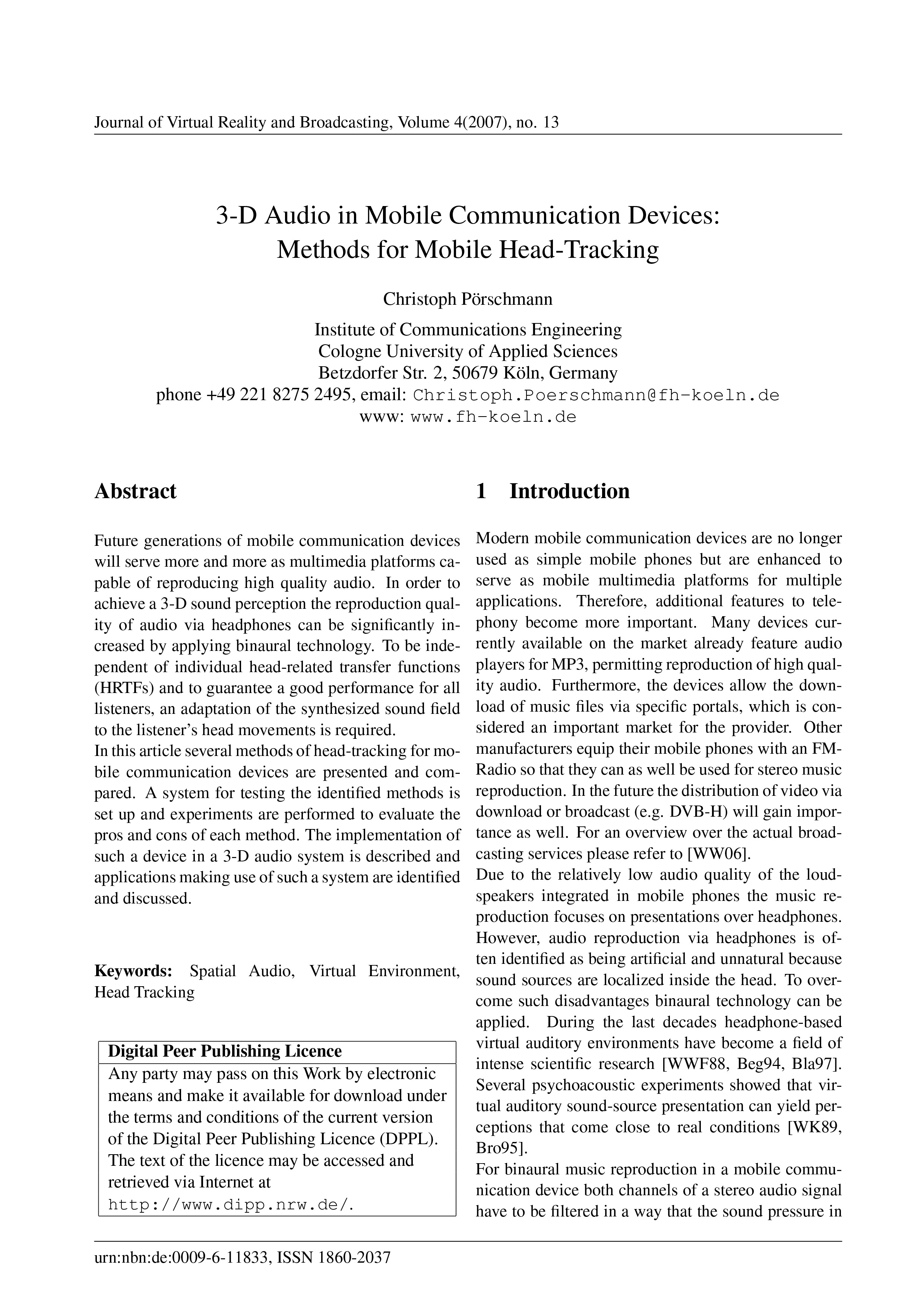3-D Audio in Mobile Communication Devices: Methods for Mobile Head-Tracking
DOI:
https://doi.org/10.20385/1860-2037/4.2007.13Keywords:
Head Tracking, Spatial Audio, Virtual EnvironmentAbstract
Future generations of mobile communication devices will serve more and more as multimedia platforms capable of reproducing high quality audio. In order to achieve a 3-D sound perception the reproduction quality of audio via headphones can be significantly increased by applying binaural technology. To be independent of individual head-related transfer functions (HRTFs) and to guarantee a good performance for all listeners, an adaptation of the synthesized sound field to the listener's head movements is required. In this article several methods of head-tracking for mobile communication devices are presented and compared. A system for testing the identified methods is set up and experiments are performed to evaluate the pros and cons of each method. The implementation of such a device in a 3-D audio system is described and applications making use of such a system are identified and discussed.






